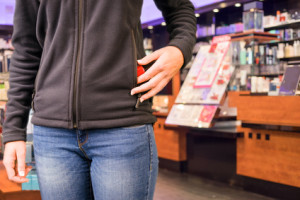 Profit preservation is the aim of every retailer. Yet shoplifting and employee theft accounts for an estimated $60 billion a year according to Forbes. The good news is that inventory shrinkage–having less merchandise than what your records indicate you should have–is a preventable loss.
Profit preservation is the aim of every retailer. Yet shoplifting and employee theft accounts for an estimated $60 billion a year according to Forbes. The good news is that inventory shrinkage–having less merchandise than what your records indicate you should have–is a preventable loss.
The overwhelming majority of thefts are opportunistic. What this means for retailers is that these crimes can be easily prevented with the right prevention loss practices in place. Learning what these techniques are and how to apply them can help you dramatically reduce “inventory shrink” and preserve your profits.
There is no one-size-fits-all approach. What’s right for you may not be as effective for another business, depending on the size and layout of your retail space. Additionally, state laws differ regarding a merchant’s detention of a suspected shoplifter.
Accordingly, having access to strategies that fit your business and budget requires knowing some basic facts about external and internal theft. It also means understanding which approaches have been shown to be the most successful in discouraging retail loss.
Effective Strategies
Traditional loss prevention strategies generally fall into two categories: (1) technological and (2) human surveillance. The most successful results have been achieved with the following practices:
- Attentive Customer Service. Remaining vigilant to providing shoppers with superior customer service has proven to appreciably decrease retail theft. Train your employees to be alert without being intrusive. Have staff greet all shoppers. Teach them where the store’s most vulnerable spots for theft are located. Have employees politely ask a suspicious customer whether they are searching for anything in particular or need help. Friendly, well-trained employees who respectfully engage with customers are a proven restraint on shoplifting.
- Video Surveillance. These systems can range from moderately-priced options to expensive state-of-the-art equipment. On average, a reliable system should cost below $1,000 and be positioned in a location that is obvious to both personnel and shoppers for optimal deterrence.
- Electronic Article Surveillance (EAS). This includes Radio-Frequency Identification (RFID) Tags–those large, plastic pins attached typically to clothing items–and stickers embedded with similar technology. Pin-tags must be removed with a contraption specially designed to detach the device. Stickers might seem less secure, but are usually very difficult to peel off items with hard surfaces. If an item leaves the store without being purchased and the tag removed, it will trigger an alarm allowing you to respond.
- Store Design and Layout. Minimize blind spots by creating as much open space in your store as practical. Display smaller or more easily stolen items in high-traffic areas, ideally in the height range between waist and eye-level. Place shoplifting signs in prominent locations. Signage that informs that all activities are monitored by video are particularly successful in deterring theft. Security mirrors are also inexpensive and effective in discouraging stealing.
- Security Guards. An unarmed guard costs about $12-$20 per hour (more for an armed guard). While this may be more horsepower than your small shop requires, you might want to consider the flexibility this extra layer of loss prevention can provide to your operations, especially during busy times, such as the holiday shopping season. One consideration is the trade-off between hiring a plain-clothes vs. a uniformed guard. A guard appearing to be just another customer will ensure that your clientele is comfortable and be more effective at detecting shoplifters. On the other hand, uniformed guards are proven to be a significantly more robust deterrent, resulting in lower rates of shoplifting.
- Inventory Management Systems. Customers are not the only thieves. Unfortunately, employee theft accounts for roughly $15 billion each year in inventory shrinkage. Inventory management software is a fairly inexpensive and powerful tool in combatting employee theft. These systems continuously track your sales activity and are capable of detecting anomalous reductions or inconsistencies in your inventory. In contrast to video surveillance and other traditional loss prevention techniques, these systems do not have blind spots. Retailers who use the software have been shown to cut employee theft as much as 50 percent. You can find a reliable cost comparison and review of the top 2016 inventory management software products suitable for small business here.
Just the Facts
According to the National Association for Shoplifting Prevention (NASP), customer theft is not a premeditated crime. In their most recent survey, NASP found that 73 percent of adults and 72 percent of juveniles who shoplifted did not plan to do so in advance. It accounts for just 38 percent of retail shrink, however, says the 2015 National Retail Security Survey, whereas employee theft is 34.5 percent of total losses. Implementing just a few simple, cost-effective steps, such as engaging customer service and inventory tracking/POS systems, can help you shrink losses, instead of stock, and preserve your profits.
If you’re a Specialty Store Services Customer who would like more information on Security Systems and Cameras, just Email Us. You can also shop for all of your Security supplies online on our website, Specialty Store Services, by Live Chat, or by phone at 800-999-0771.
